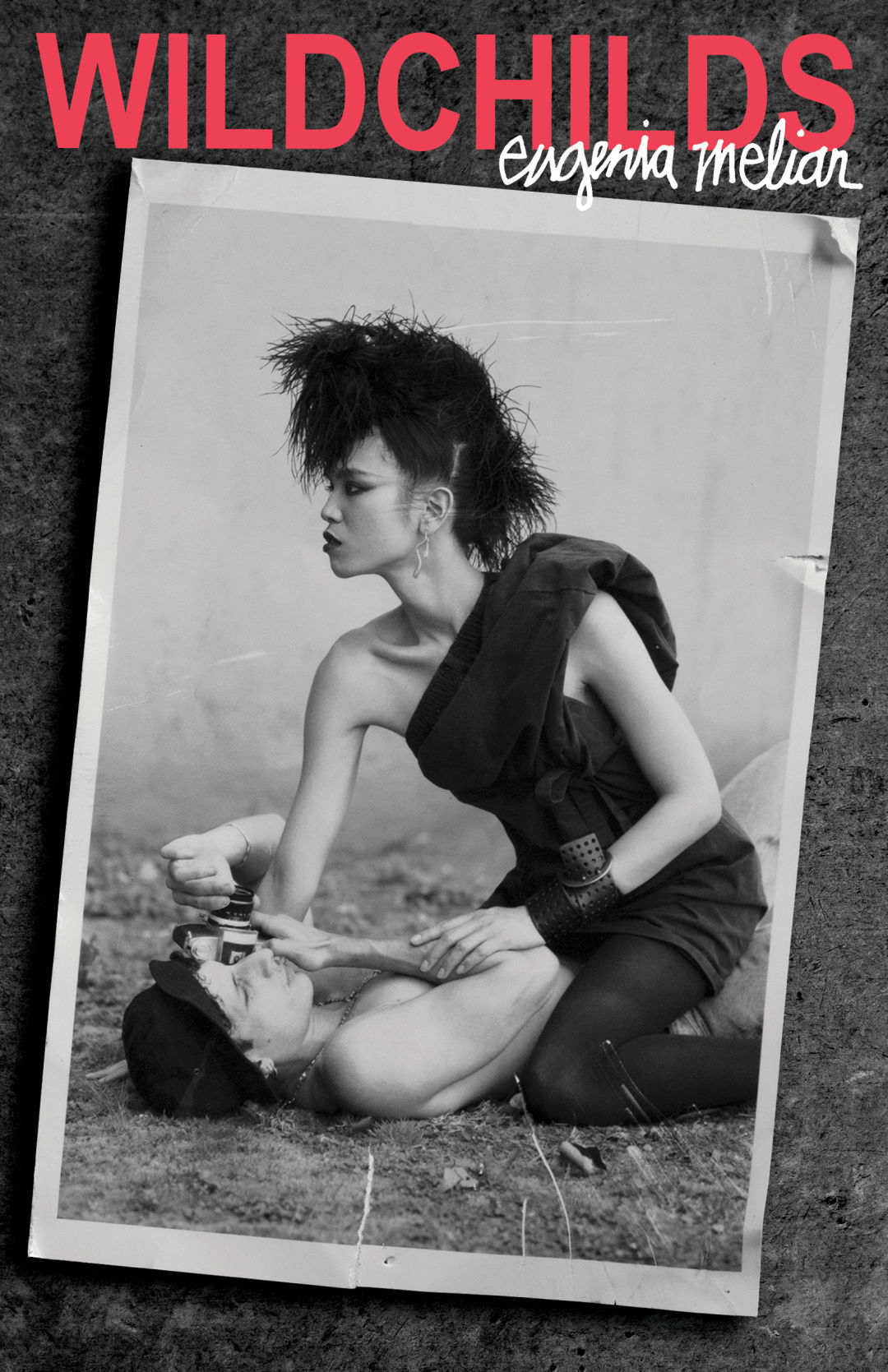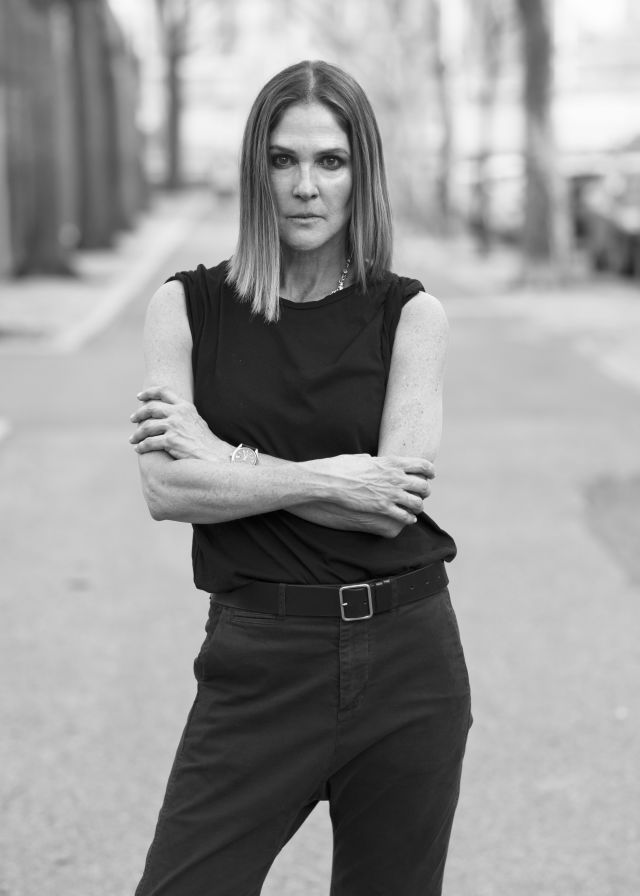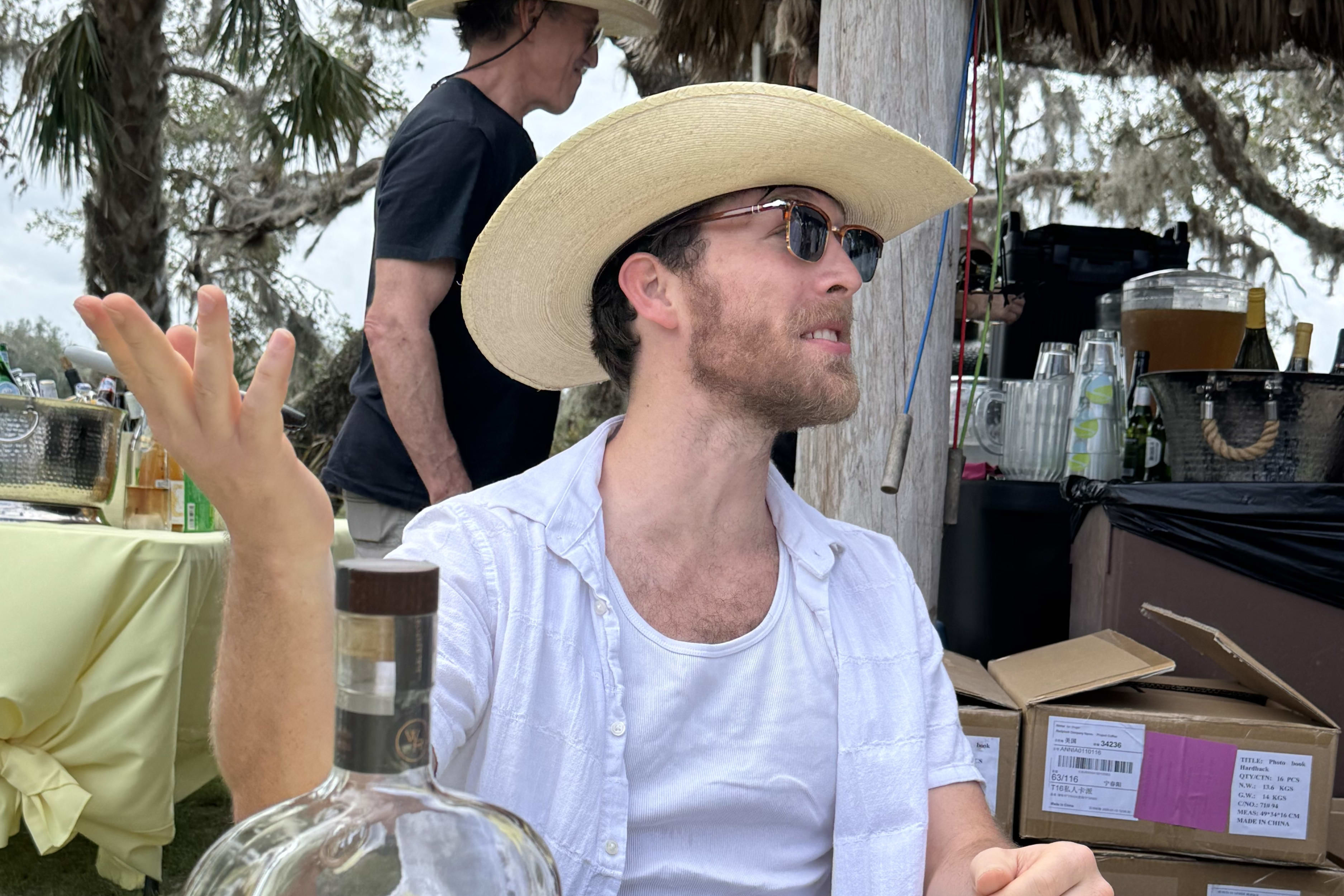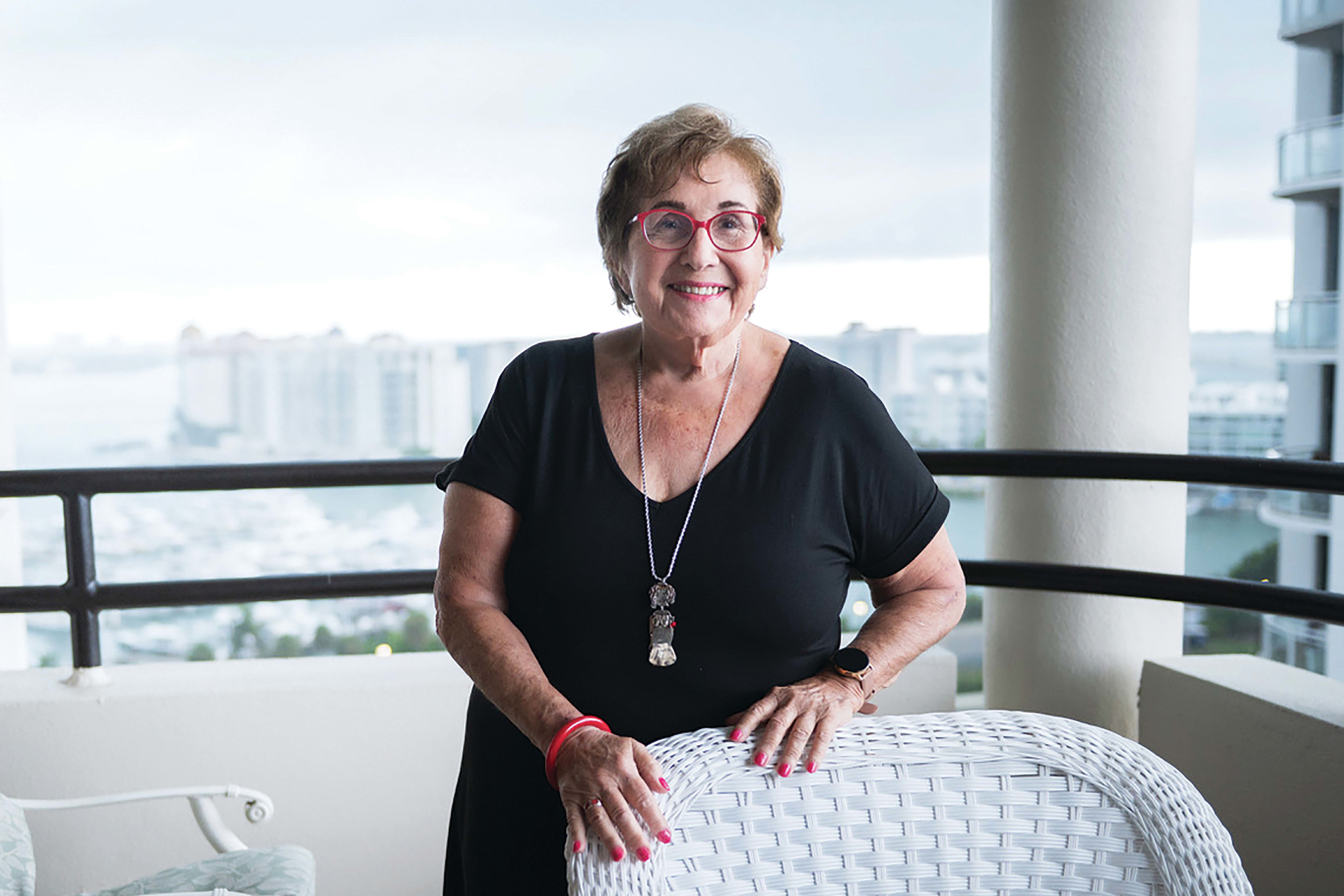Model, Agent, and Producer Eugenia Melian On Her New Novel Wildchilds

Wildchilds by Eugenia Melian
Image: Ethan James Green
The latest must-have fashion read is Wildchilds: A Novel, the fiction debut from perennially chic and connected Eugenia Melian. Since the early 1980s, Melian has worked as a model, agent, producer, and music supervisor in all the covetable locations: Milan, Paris, London, New York and Los Angeles.
In doing so, she's discovered, managed, art-directed and produced some of the most talented artists of our time, with highlights that include launching the careers of iconic photographers Tony Viramontes and David LaChapelle, and co-producing Malcolm McLaren’s cult album Paris. She's also collaborated with Catherine Deneuve, Françoise Hardy, LouLou de la Falaise, Sonya Rykiel, Rocco Siffredi, Helmut Newton, David Bailey, Faye Dunaway, Marlon Brando, Prince, Tilda Swinton, Guerlain, Vogue, Daft Punk, Blur, Stella McCartney, Janet Jackson and The Face.
Joan Juliet Buck, author of The Price of Illusion and legendary former editor-in-chief of French Vogue, is a fan, too. "If fashion photographs could talk, and felt like telling the truth, you'd have Wildchilds—an accomplished and compelling first novel by a true insider," Buck writes. "Only Eugenia Melian knows every side of that world of beauty, sex, greed, and lies, starting as a model, becoming a leading photographer's agent and a force in Paris fashion and culture of the '80s, '90s and 200s. With cool passion and great suspense, she denounces the cowardice of those men who manipulate the most beautiful women in the world. Melian tells the story of Iris, the daughter of a famous magazine editor exiled to New York, who becomes a model in Paris and falls into love and peril. Melian's descriptions of the steamy rise of sexual attraction on a fashion shoot are matched only by her exquisite, enchanted descriptions of a dark and secret Paris unknown to visitors."

Eugenia Melian
Image: Ethan James Green
With that, I give you Eugenia Melian.
You have an incredibly unique perspective on the fashion industry. Would you pull back the curtain for those wanting to get on the inside—how easy is it to “make it” in the industry?
Yes, for sure, in Wildchilds I pull back the curtain. I think it is very important for kids who want to try to be part of the industry to have the whole picture: how hard it is, how few make it, how driven you have to be and the sacrifices you have to make. Not many make the cut. It is an exclusive industry with complex hidden agendas and unwritten rules. Sometimes, no matter how talented you are, you will not be given access because talent alone does not get you there; entry is also a combination of luck, contacts, beauty, and youth. Sometimes also money. Oh, and a personality helps too! You must work hard and party hard, network and learn the codes, the hierarchies, the system.
Why were you compelled to write a novel rather than non-fiction?
Because only with fiction I could tell the truth.
It feels necessary to talk about #MeToo and modeling. Why it is especially difficult to put a stop to abuses of power and sexual harassment in the fashion industry?
Because so many of the kids who try to make a career out of modeling are 16-year-old, unchaperoned girls and boys who are living alone in big cities. Where there is youth, innocence, and beauty, predators roam.
Because on a fashion shoot, a photographer is asking a young girl to act seductively because seduction sells everything, from cars to lingerie—the girl is putting her trust in him, seducing him, his camera…the line is fine.
Because the modeling industry churns out so many new kids a year, they are all replaceable. The adults take advantage of this: “If you don’t want to do this, some other girl will, but you won’t work with me again.” Bookers at the agencies encourage their girls to be “less difficult.” If they have to choose, bookers will protect their relationship with the clients, but don’t really look after the models’ interests.
Because alcohol and drugs are the norm on a lot of late-night shoots, because late night shoots are the norm, too. There is nothing good about a 16-year-old going home alone at 2 a.m. after a long shoot where alcohol was served.
Because a lot of the teenage kids are supporting their families and they have no choice.
You enjoyed an idyllic childhood in southern Spain’s Andalusia region where guests like Jackie Onassis, Maria Callas and Slim Aarons visited your family home. Would you share a favorite story about growing up?
I remember going onboard the Cristina, Aristotle Onassis’ yacht, when I was 11 years old. Aristotle and Jackie Onassis were giving a casual lunch. As Jackie was giving us a tour of the yacht, we arrived at the swimming pool where Aristotle was doing laps. Seeing that his guests had arrived, he climbed out of the pool at started welcoming the group. He was naked. Graciously, Jackie steered the group of kids away while Aristotle wrapped a towel around his waist. Our eyes were like plates. We had never seen a naked person before, let alone one standing in front of us without a care in the world. Jackie then chatted to me about horseback riding and gave me her full attention, ever so charming. I promised her I would give her polo lessons.
Slim Aarons only wanted to photograph beautiful people in beautiful places. One day, when he was shooting at our home, he asked my sisters if they had handsome guests staying there that he could shoot. They did. But I also had a guest staying; he was not handsome but he was a super famous punk star. Slim asked me to trot him out. He took one look at him and said to my face, “No. Too ugly.” I was mortified for my guest.
Slim and my mother also used to argue a lot about staging the shots at my home. Slim loved color, and my mother always said, “Slim, this is not Palm Beach! He just said, “I want more color!” My mother enjoyed Slim’s company, as a fellow American, but it was also hard work, and Slim was a demanding photojournalist. Finally, after many years of friendship, he asked my mother if she would like a family picture as a gift, and she said she would love a picture to use as the family Christmas card. That was almost the end of their friendship and my mother was in a terrible mood for a long time after it because he asked her to wear a pink shirt! You can see the photo here.
Would share a story about your relationship with iconic photographer and illustrator Tony Viramontes, whose life was tragically cut short by AIDS?
Tony would get possessed when he was illustrating. Maria Callas would be blasting in his studio, the model in full hair and make-up, standing on a raised platform with Tony hunched over his drawing table with his sooty chalks, cutters and calligraphy pens. On one occasion, as he was making a collage, ripping and stabbing at the paper while staring at the model and shouting instructions to her over the loud music, he sliced off the end of his finger, but was so possessed by the moment that he didn't even notice. Blood was spurting everywhere and I ran to the kitchen to get a cloth, which I wrapped around his hand. He continued to work until he finished the job, then passed out in the taxi on the way to the hospital to get his hand stitched. I took the piece of finger with me wrapped in kitchen foil. Talk about focus!
Tony was the most intense artist that I have ever worked with. He became one with his models, he was a perfectionist, he could do over and over again the same illustration until he captured the right expression, attitude, gesture, mood...looking for the intangible things that create a great shot, that make the difference between the perfect and the unique.
Finally, what's your take on social media and fast fashion, and how the fashion industry can keep up in the want-it-now-buy-it-now world?
I have a careful relationship with social media and I am not very active on it. I think it destroys the mystery. On the other hand, I am aware that if used wisely it can be a fantastic tool, especially in the arts and fashion industry that are so exclusive and allow little entry. With social media, you can break down those gates and create your own audience. You have more of a chance of being “discovered,” and you have a voice and a platform where you can express yourself. I do get worried by the noise and the “visual entertainment” factors, which tend to drown out your thoughts and force you to become louder to be noticed. It’s like everything—use wisely and don’t let it replace the real world.
As for fast fashion, I am totally against it. Not only is it not sustainable from an environmental aspect, but it is also just politically, ethically and socioeconomically wrong. Did you know that the people making your cheap clothes make just $2 a day. and to increase their salaries to $5 a day would make a difference of only 25 cents on your fast clothes, which to them is a difference between living with a little dignity or most likely dying? Did you know that your cotton jeans are so full of pesticides that they could make you sick?
I believe in buying one good piece of clothing a year instead of 20 cheap, fast ones. I have so many pieces from the '80s and '90s that I still wear. They are so beautifully made with care and respect, made to last, made for you to be able to pass on to the next generations, which I am finally doing with my pants and skirts because I am no longer a size 2! We are being manipulated by the media into believing that we must have it all and have it right now. Well, guess what? We don’t. We have to change the thinking on all that, or it will just make us unhappy and insecure.



